Atlantic Coast

With our time in Spain at a close we crossed the border, by just a few km’s, to the port town of San Jean de Luz.

The municipality is generous enough to provide a very central Aire for motorhomes but unfortunately its sandwiched between a busy road and a railway line – notwithstanding this we managed a decent nights sleep and on the plus side, it is only a couple of hundred metres from the centre of town.

The town itself is a charming mix of an old fishing port and a turn of the century seaside resort. There is a big sandy beach and a surprisingly good shopping area.

One of the highlights of our visit was the church (Eglise Saint-Jean-Baptiste). We have seen a lot of churches in France and, while most are very impressive, we were starting to feel a little churched-out, so much so that we very nearly skipped this one on our jaunt around town. At the last minute though, we popped our heads in as we were passing and are so pleased that we did because it is definitely one of the best. The outside is very plain and hemmed in by other buildings but once you go inside it is beautiful medieval building with three levels of wooden galleries running down each of the sides and back, a golden altar piece, decorative ceiling and hanging from the ceiling a model fishing boat.
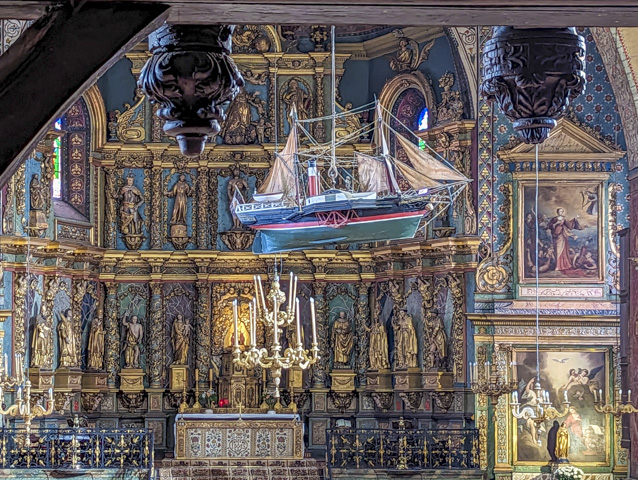
The church actually has a place in history as, here in 1660 Louis XIV (the Sun King) married Marie-Thérèse of Austria (the Infant of Spain). Traditionally the men would have sat on the balconies and the women on the main floor of the church.

Our next stop on the way North was only a few km’s up the coast, just outside the town of Biarritz, at Milady Beach.
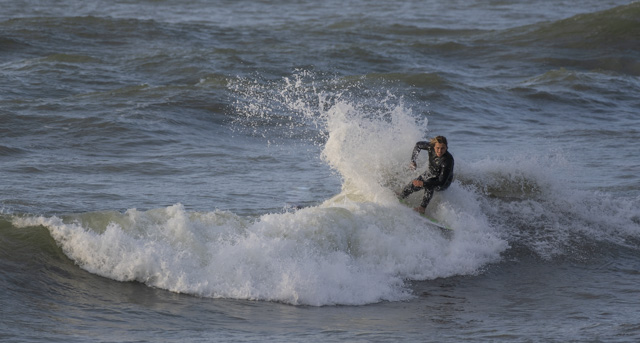
This wild surf beach is a magnet for surfers and we could spend hours just watching the surfers and the waves but it was definitely a bit too wild for my very amateur surfing!

From here we got on our bikes to explore Biarritz which is a very grand town and is clearly an upscale seaside resort, a bit like a Posh French version of Brighton.

We cycled through the town to the lighthouse and then back along the seafront.

Right next door to Biarritz is the town of Bayonne on the banks of the rivers Adour and Nive. It is a lovely old city with cobbled streets of half-timbered houses.
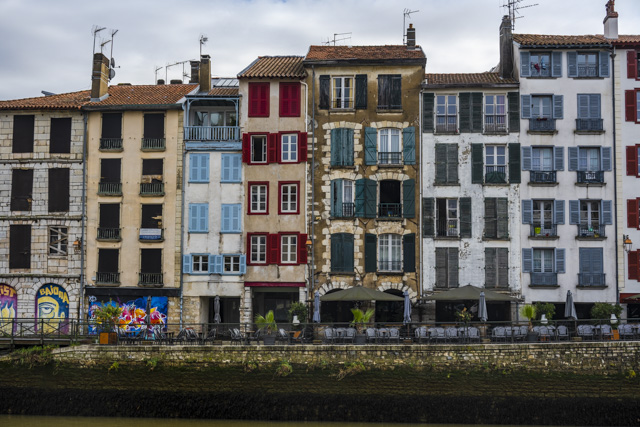
There is a large cathedral with twin spires which can be seen throughout the city.

After spending an enjoyable day in Bayonne we continued up the Coast to the Landes Commune. This is an area of long undeveloped wild beaches. We found a great park-up, just behind the dunes at Capbreton.

Here there is a trail through the dunes and along the beach in this nature reserve.
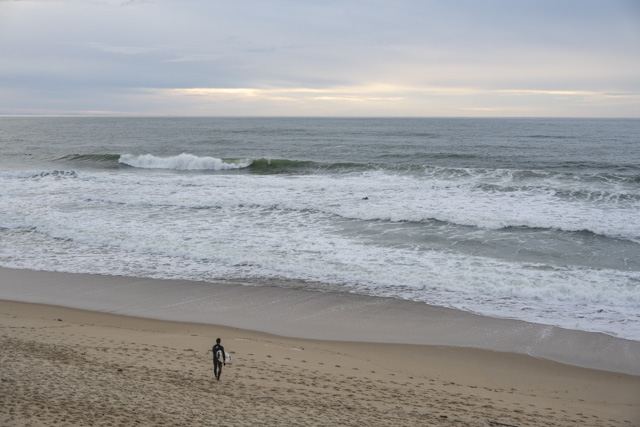
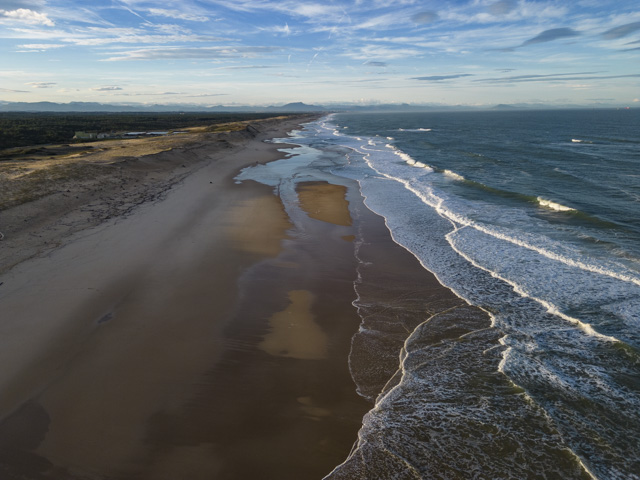
This area was part of the Nazi Atlantic Wall to defend against Allied invasion and there are a number of concrete bunkers that have fallen into the sea and sit on the beach.

These have been decorated with graffiti and look spectacular in the crashing surf.

After some long walks on the beach we got back on the road and headed North towards the Dune du Pilat, which, at almost 3km long, 500m wide and over 100m high, is the tallest sand dune in Europe.

There is a temporary staircase erected every year which reaches almost to the top but the last few metres up the sand is hard work. Coming down is much more fun as you can run down, digging your heels in and flying metres at every step, unfortunately they do not allow sledging which would have been even better.

Dune du Pilat is not far from Bordeaux which is somewhere we would like to explore in the future but for this quick run back up North we set our sights on the much smaller and very beautiful wine producing town of Saint-Émilion, just to the east of Bordeaux. This proved to be a great choice as the town is not only a thriving centre of wine production but has some interesting history to explore.

The town is named after a monk called Émilion who, legend has it, fled his hometown in Brittany, Vannes, in the 8th century to come to the area where he created a hermitage carved out of the limestone rock for which the area is also well known. He is credited with a miracle as when caught smuggling bread to distribute amongst the poor, he opened his coat and the bread had turned into logs of wood, thereby avoiding punishment. Later of course when delivering the ‘logs’, they had transformed back into loaves of bread.
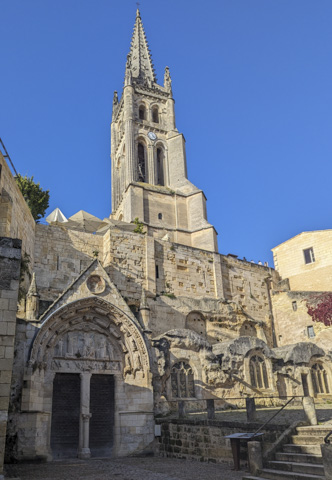
In the 11th century the construction of the monolithic church of Saint-Émilion, to protect the body of Saint-Émilion, was begun. When completed this church, which has been carved out of a limestone cliff, was and still is, the largest monolithic church in Europe with the main room being 38 metres long, 20 metres wide and 12 metres high.

In recent times the columns holding up the roof have had to be stabilised with steel collars as they were subsiding as a result of the weight of the tower built on top of the cliffs and the porous nature of the limestone rock.

Beneath the streets of the town is a labyrinth of tunnels which were dug to extract the white limestone which was used for many of the buildings in nearby Bordeaux. Many of these tunnels are now used to store the wine for which the area is famous. We visited one of the wineries which allowed us to wander around some of their catacombs freely and see the ageing wine.
Knowing we needed to get some miles under our belts we moved North to the town of Rochefort, which is just south of La Rochelle.
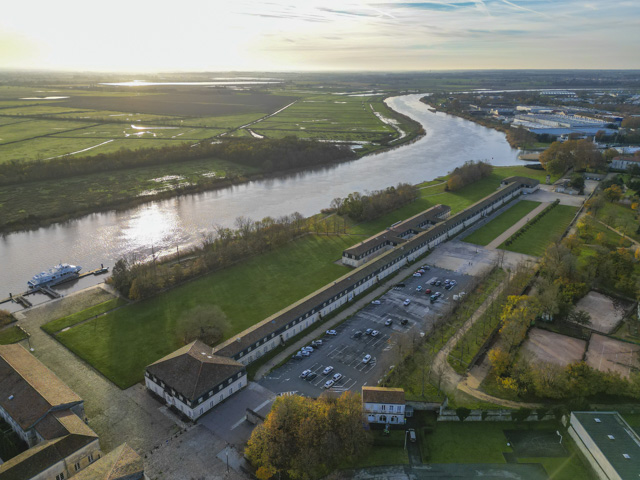
Rochefort is a maritime town on the Charente estuary which was the site of a naval base and dockyard from the 17th century through to its closure in 1926.
We explored the exterior of the docks and were all set to visit the maritime museum here but unfortunately it was closed when we turned up.

However we did stumble across a large Saturday market in the town which we enjoyed walking through and sampling some of the foods.

On our way South earlier in the year we had avoided visiting Ile de Re because it was summer and we expected it to be really busy but at this time of the year, on our trip back North, we decided to have a quick look to see what all the fuss is about.

After crossing the toll bridge onto the island we managed to find a small wild camping spot right next to a beach to spend the night – something that I expect would have been impossible at the height of summer.

We didn’t waste anytime in getting on our bikes to explore the area. The island is criss-crossed with bike paths and its almost entirely flat and only 5km wide so perfect for biking around.

We headed to the town of Saint Martin de Re, which is the capital of the Island. It’s an attractive little town with most of the cafes, bars and shops situated around, and on the streets leading down to, the harbour. Understandably many of the shops were shut for the season and, it being November, the weather wasn’t that great, but despite this there were still a fair number of tourists around and plenty of opportunities for a hot chocolate or a vin chaud to warm us up!